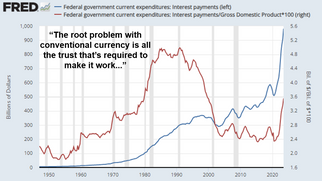
Historically, a yield curve inversion has been a precursor to recessions. In 2023, the yield curve had been inverted for a length of time generally preceding economic contractions, suggesting a high probability of a recession in 2024.

After months of mainstream victory laps – including Paul Krugman's famous "inflation is over. We won at at very little cost" – it turns out inflation's not dead after all. It's not even resting.

A policy pivot, defined as the transition from raising interest rates to lower them, coupled with the injection of liquidity into the economy through quantitative easing, has sparked a debate on its implications for the job market and individual retirement accounts.

In a dramatic pivot, central banks worldwide are following the Federal Reserve's lead in shifting from rate hikes to anticipated rate cuts, a move that has taken financial analysts and economists by surprise.

And to Joe Biden's Re-Election

Earlier today, Jerome Powell took to Capitol Hill to announce that the Federal Reserve will be holding rates where they are for the time being in an effort to get the inflation rate back toward its 2% target.

The Federal Reserve has opted to maintain its policy interest rate as it navigates the precarious path of cooling inflation without significantly increasing unemployment, according to Federal Reserve Chairman Jerome Powell.

In today's Federal Reserve rate decision, the central bank is anticipated to maintain interest rates at a 22-year peak, signaling a pause in its aggressive rate-hiking campaign.


















